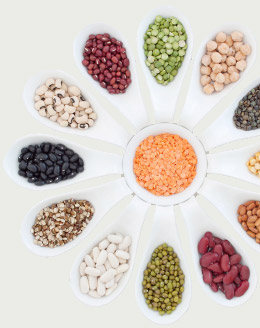
How to cook beans
Posted in Diet & Nutrition on September 7, 2011 by NebraskaHealth.com staff. Last modified on April 21, 2019. Read disclaimer.
A staple in Latin, African and Asian diets, dried beans, lentils and peas (all members of the legumes family) are a virtually fat-free, gluten-free source of protein, dietary fiber, complex carbohydrates, and essential vitamins and minerals.
Including more beans in our diet may not only help America's battle the ongoing obesity trend (because beans digest slowly and provide sustainable energy, they help suppress appetite for hours. In addition, they're a good source of roughage so we feel fuller, faster.) Eating beans may even help reduce one's risk of heart disease and certain forms of cancer.
Note: By themselves, beans do not provide complete protein. Fortunately, grains provide the missing amino acids so pairing beans with grain create complete protein.
Shop Amazon's 100 Best Selling
ELECTRIC
PRESSURE COOKERS
Cooking beans 101
While beans are affordable, nutritious and delicious, preparing them takes a little preplanning (with lentils and split peas being somewhat of the exception). But if you can plan ahead -- like the night before -- legumes require very little actual work time.
- Measure out desired amount of beans (2 cups of dried beans will yield 5-6 cups of cooked, drained beans.)
- Sort (looking for shriveled or discolored beans, pebbles, twigs, etc.) and rinse well.
- Soak beans to remove a lot of their gas-causing sugars, increase digestibility and reduce cooking time. (Lentils and split peas cook so fast that soaking is not required.) Two bean soaking methods are suggested, with the "slow soak" method retaining more nutrients but the quick-soak option removing more of the gas-causing, indigestible carbohydrates.
- Slow or Overnight: Add beans to a stockpot with along with salt and enough water to keep beans submerged as they rehydrate. Cover and refrigerate over night (a minimum of 5hours). The next day, drain and discard liquid.
- Quick Soak: Bring salted water (enough to cover beans) to a boil. Add beans and boil for 2-3 minutes. Cover and set aside for at least 1 hour (4-8 hours is even better if you want to greatly diminish "gas-iness").
- Drain and discard salted soaking water. Rinse beans once again.
- Add 3 cups of water for every 1 cup of dried beans. (Don't like measuring ingredients? Just add enough water so it rises 1" above the soaked and rinsed beans.) At this time, you can also add a pinch of salt, seasoning, ham, salted pork or bouillon, if desired. Some Latin American recipes call for epazote and Asian recipes suggest kombu seaweed to enhance digestibility of beans. Do not add vinegar, lemon or tomato juice, however, until beans are nearly done cooking. If added too early, sugar or acidic ingredients can toughen beans and extend the cooking process.
- Cover pot and bring to a boil.
- After boiling for 10 minutes, lower temperature to prevent skins from breaking -- which results in mushy beans -- and simmer for appropriate length of time (see Bean Cooking Chart below). If foaming becomes a problem, skim off foam with a large spoon and cook beans without a lid.
- Check pot and stir occasionally. Add water if beans become uncovered. To test if beans are done, they should mash easily between fingers or with a fork.
How to reduce flatulence associated with beans
Many of us associate beans with flatulence. "Gas" is a result of the high fiber content (roughage) and fairly uncommon, complex sugars that beans contain. Fortunately, the old saying is partially true: "Beans are a magical fruit. The more you eat, the less you toot!" Beans are not a fruit. But as a body gets used to digesting beans on a regular basis, gas becomes less common.
Tips for minimizing flatulence include:
- Start slowly and gradually introduce beans more often into your diet.
- Soak beans well, drain and replace water before cooking. Many of the hard-to-digest complex sugars will dissolve into the water and are removed when you discard the soak water. While slow soaking beans results in less nutrient loss, the quick soak method tends to make beans less gaseous.
- Consider Beano®, a natural enzyme product you can add to foods to help breaks down complex carbohydrates.
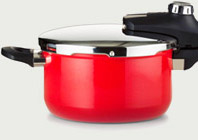 Cooking beans in a pressure cooker can save you a lot of time. And modern stovetop and electric units are far safer than older models where bean skins could block the release valve and result in an explosion. Important tips to remember when pressure cooking beans are: (1) 1/2 Full Rule: The soaked beans, other ingredients and enough water to cover plus 2 inches should never exceed 1/2 the capacity of the cooker. This allows for beans to expand yet stay covered in water. Plus it leaves room for foam and froth. (2) Add Oil: One tablespoon of canola oil per cup of beans will help cut down on foaming. When cooking time is up, stove top pressure cookers can be cooled quickly by running cold water over the edge of the lid to release pressure. However, never place an electric pressure cooker in water! And be sure to clean and check the lid and vent for bean skins. An alternative, though slower (6-8 hours), method is to cook dried beans in a crock pot.
Cooking beans in a pressure cooker can save you a lot of time. And modern stovetop and electric units are far safer than older models where bean skins could block the release valve and result in an explosion. Important tips to remember when pressure cooking beans are: (1) 1/2 Full Rule: The soaked beans, other ingredients and enough water to cover plus 2 inches should never exceed 1/2 the capacity of the cooker. This allows for beans to expand yet stay covered in water. Plus it leaves room for foam and froth. (2) Add Oil: One tablespoon of canola oil per cup of beans will help cut down on foaming. When cooking time is up, stove top pressure cookers can be cooled quickly by running cold water over the edge of the lid to release pressure. However, never place an electric pressure cooker in water! And be sure to clean and check the lid and vent for bean skins. An alternative, though slower (6-8 hours), method is to cook dried beans in a crock pot.
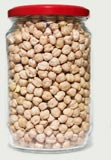 Storing uncooked, dry beans
Storing uncooked, dry beans
If unopened, it is best to keep beans in the plastic bag in which they were purchased. Once opened, dried beans can be stored in an air-tight glass container (canning jars work well) for up to one year or longer in a cool, dry place (but not in the freezer or refrigerator). The older beans are, the longer cooking time they may require and the tougher the shells will be (no matter how long they are cooked).
Bean cooking chart
Just as the age of beans can effect cooking time, so can altitude, water hardness (if hard water is a problem in your area, you may want to use bottled water) and personal preference.
Below are the approximate cooking times for soaked beans, under normal stovetop cooking conditions. Cooking times at high elevations will be longer. Times for cooking beans in a pressure cooker or a slow cooker will be dramatically different.
| Name | Cooking time | Popular uses |
| Black Beans: | 2 hours | Caribbean and South American dishes, soups, salads |
| Chick peas (Garbanzo): |
1 - 1.5 hours | Middle Eastern and Indian dishes, humus, salads. The most widely consumed legume worldwide |
| Cranberry: | 1.5 - 2 hours | Italian cuisine |
| Great Northern (Large white): |
1 - 1.5 hours | soups, baked dishes |
| Kidney: | 2 hours | New Orleans dishes, Southwest chili, in salads, with rice |
| Lima (Butter): | 45 minutes - 1 hour | soups, with grains, puree into a spread like humus |
| Navy: | 1.5 hours | Boston and English baked beans, soups |
| Pink: | 1 hour | barbecue dishes |
| Pinto: | 1.5 - 2 hours | Mexican and South American dishes, refried beans |
http://www.northarvestbean.org/html/news.cfm?ID=359
http://www.ncbi.nlm.nih.gov/pubmed/7706585
http://www.calbeans.org/beanbasics.html
http://bean.idaho.gov/facts.html
 Most Popular Topics:
Most Popular Topics:
 Feeling blah? Boost your mood
Feeling blah? Boost your mood Tips for making fitness fun
Tips for making fitness fun Preparing for retirement
Preparing for retirement Summer heat safety tips
Summer heat safety tips Keeping your teeth in tip-top shape
Keeping your teeth in tip-top shape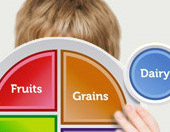 What are the nutritional needs of children?
What are the nutritional needs of children? Tips for preventing sunburns
Tips for preventing sunburns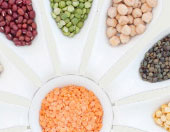 How to cook dried beans
How to cook dried beans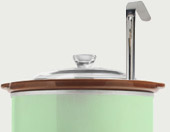 Slow cooking beans in a crock pot
Slow cooking beans in a crock pot Medication safety tips
Medication safety tips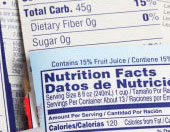 Why are food allergies becoming so common?
Why are food allergies becoming so common? Foods associated with romance
Foods associated with romance